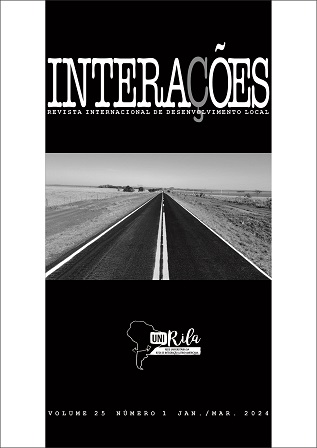Latin American Integration Route: a reflection of the cultural heritage of Mato Grosso do Sul
Keywords:
RILA, cultural heritage, Mato Grosso do SulAbstract
Based on the proposal for the Dossier: The Role of Unirila in the Challenges of Integration in the Biooceanic Route (Brazil, Paraguay, Argentina and Chile), this article aims to conceptualize, identify and analyze the importance of the Cultural Heritage of Mato Grosso do Sul-MS and its relevance in the context of the biooceanic route since this road corridor crosses part of this territory, causing socioeconomic and cultural impact. The biooceanic corridor is a project started in 2000 with the purpose of building a network of infrastructure works such as waterways, ports, energy and communications interconnections and road corridors to connect the Port of Santos, in Brazil, with Chilean ports, passing through Paraguay and Argentina. . This event will certainly open economic possibilities in various aspects in the region and, considering and identifying the local culture can add value and incorporate the cultural theme in tourism actions, local development as well as in public policies. This work presents a methodology through documentary and bibliographical research and searches for information about the cultural heritage of Mato Grosso do Sul-MS, together with the competent bodies in the identification and preservation of the culture of MS. With this, it is expected that this article contributes with information for these developmental actions and to increase the self-esteem of the community that belongs to this place.
References
BAUMAN, Zygmunt. Identidade: entrevista a Benedetto Vecchi. Rio de Janeiro: Jorge Zahar, 2005.
BRASIL. Constituição da República Federativa do Brasil. Brasília, DF, 5 out. 1988. Disponible en http://www.planalto.gov.br/ccivil_03/Constituicao/Constituicao.htm. Acceso el 5 julio 2022.
BRASIL. Decreto-Lei n. 25, de 30 de dezembro de 1937. Organiza o patrimônio histórico e artístico nacional. Brasília-DF, 1937. Disponible en https://www.planalto.gov.br/ccivil_03/decreto-lei/Del0025.htm . Acceso el 1º julio 2022.
Constantino, M.; Dorsa, A. C.; Aragão, J. C. M.; Mendes, D. R. F. Fluxos turísticos entre os países do Corrredor Bioceânico. Interações, Campo Grande, v. 20, n. especial, p. 57–67, 2019. Doi: https://doi.org/10.20435/inter.v20iespecial.2255
RIEGL, A. O culto moderno dos monumentos: a sua essência e a sua origem. Tradução de Werner Rotchschild Davidsohn e Anat Falbel. São Paulo: Perspectiva, 2014.
SANTOS, Milton. A natureza do espaço: técnica e tempo, razão e emoção. 4.ed. São Paulo: Editora da Universidade de São Paulo, 2006. v. 1.
VILLAÇA. Flávio. Espaço intra-urbano no Brasil. São Paulo: Studio Nobel, 1998.
Downloads
Published
How to Cite
Issue
Section
License
Copyright (c) 2024 Joana Ribas Bernardes Lima, maria margareth escobar ribas lima, rodrigo mendes de souza, juliana villela junqueira

This work is licensed under a Creative Commons Attribution 4.0 International License.
Direitos Autorais para artigos publicados nesta revista são do autor, com direitos de primeira publicação para a revista. Em virtude de aparecerem nesta revista de acesso público, os artigos são de uso gratuito, com atribuições próprias, em aplicações educacionais e não-comerciais.


